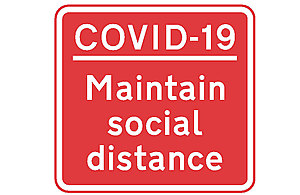New guidance published to ensure transport network is safe for those who need to use it

- new guidance published on how to make journeys safely
- public urged to continue to work from home if they can and avoid public transport where possible to reduce pressure on the network
- those who have to travel for work should consider changing their travel habits – including cycling, walking or driving, and avoiding rush hour – to help people socially distance from others and reduce pressure on public transport
New guidance published today (12 May 2020) provides advice on how passengers should make journeys safely, following the publication of the government’s roadmap and strategy for the next phase of the pandemic. It urges people to consider cycling, walking or driving to help ensure there is enough capacity for those who need to travel on public transport to do so safely.
As the Transport Secretary stated on Saturday (9 May 2020), even as public transport begins to revert to a full service, the 2-metre social distancing rule would only leave effective capacity for one in ten passengers on many parts of the network.
The advice sets out that if people who cannot work from home and have to travel for work, they should first consider alternatives to public transport. Those driving their own cars have been asked to avoid busy areas.
For those who have to use public transport, the guidance for passengers on how to travel safely recommends:
- keeping 2 metres apart from others wherever possible
- wearing a face covering if you can
- using contactless payment where possible
- avoiding rush hour travel where feasible
- washing or sanitising your hands as soon as possible before and after travel
- following advice from staff and being considerate to others
All transport operators have been issued guidance on ensuring stations and services are regularly cleaned, making clear to passengers how to stay 2 metres apart where possible in stations, airports and ports, and to ensure routes for passengers are clearly communicated to avoid crowding. The government’s guidance also sets out steps operators should take to provide safe workplaces and services for their staff and passengers across all modes of private and public transport.





